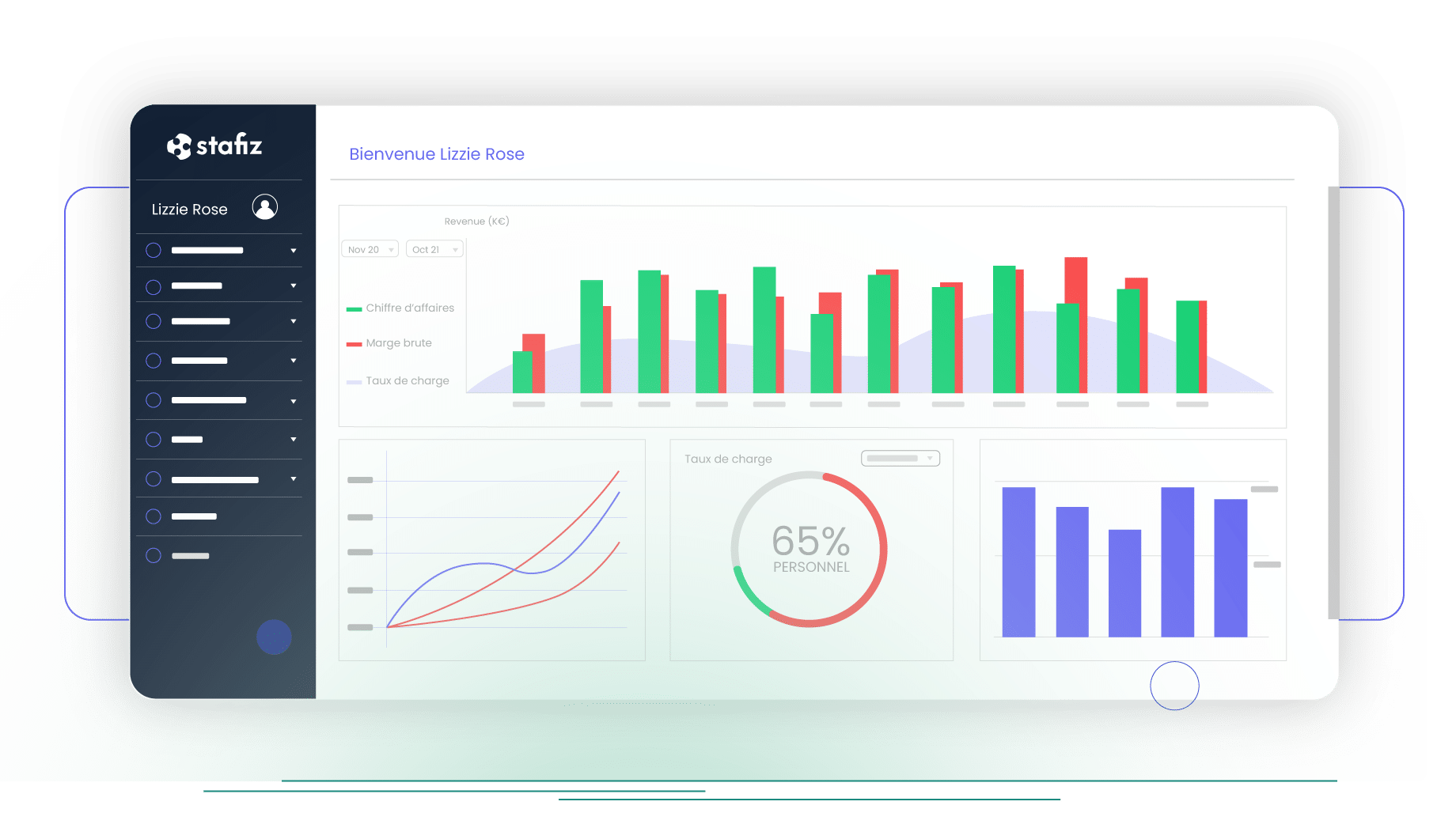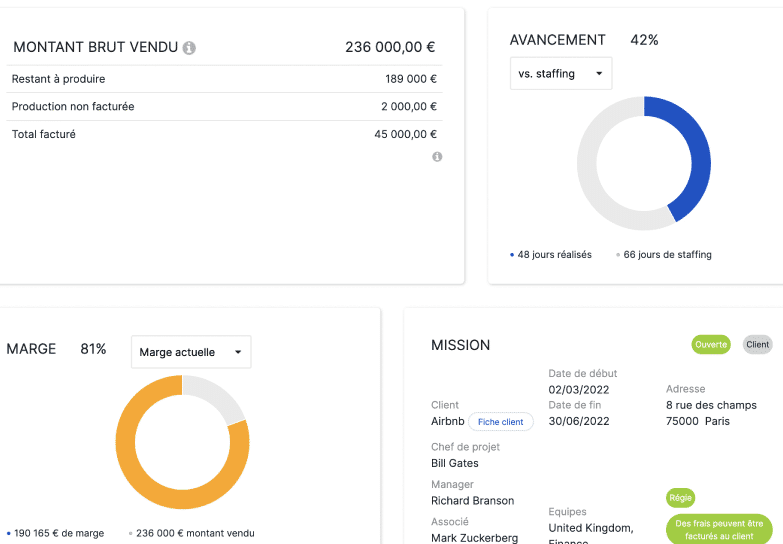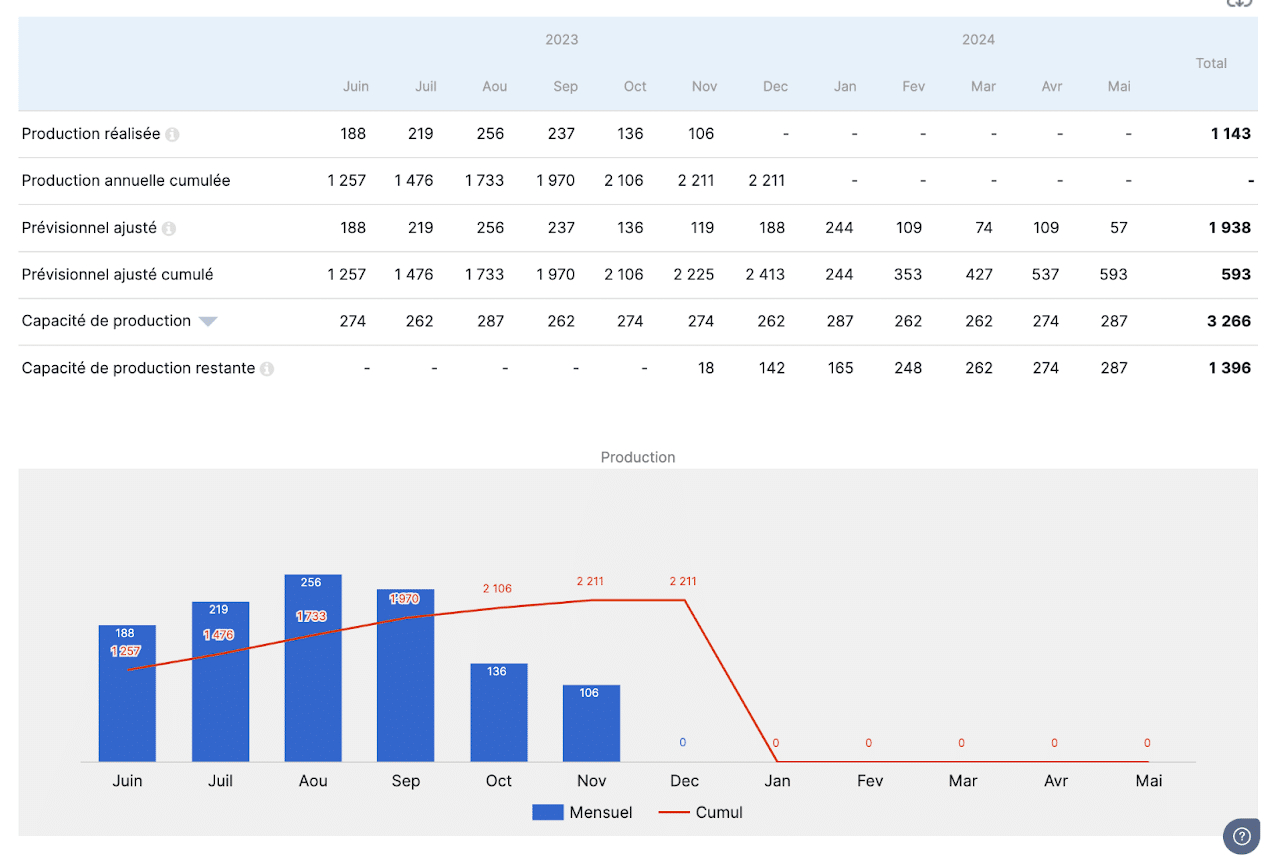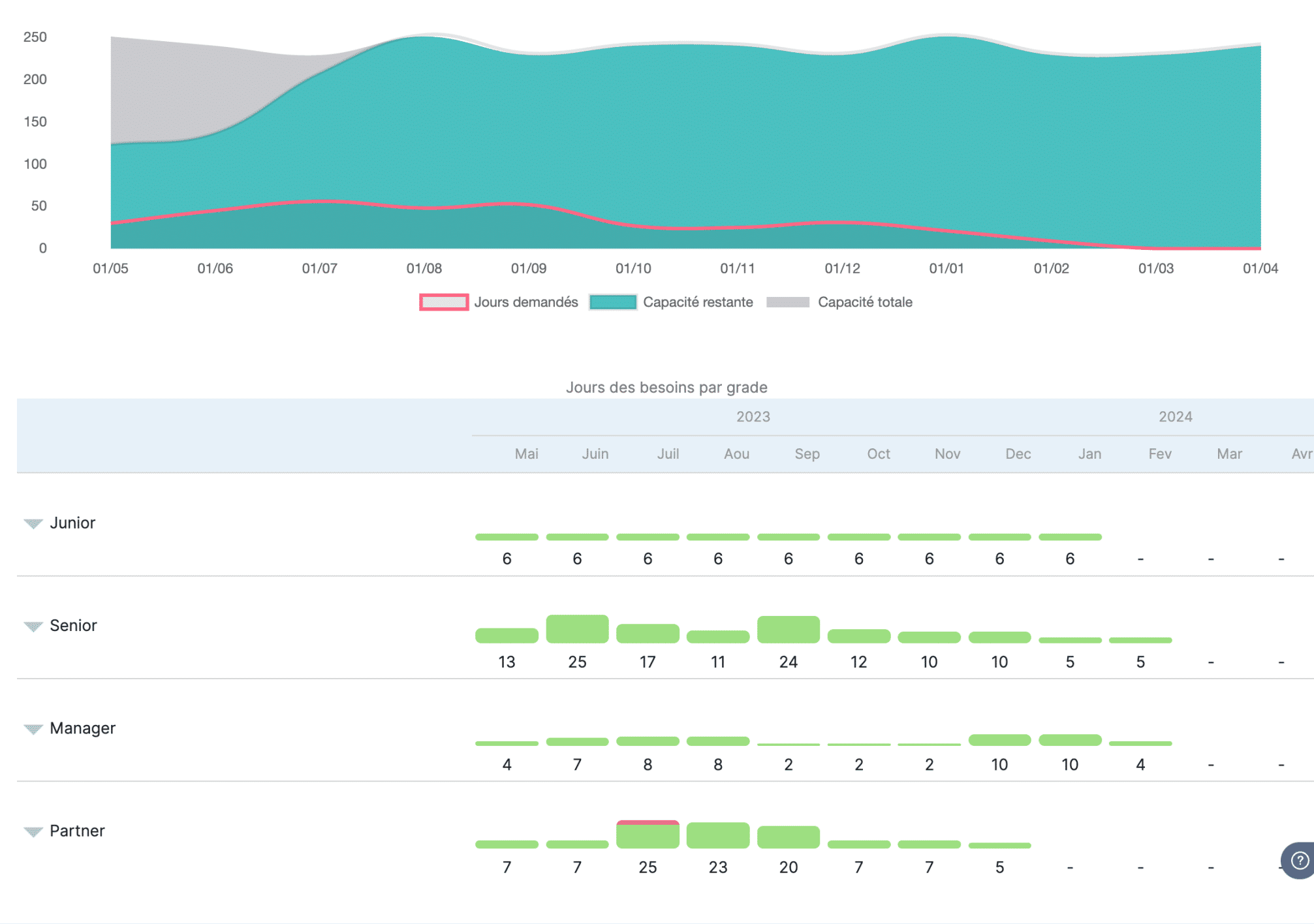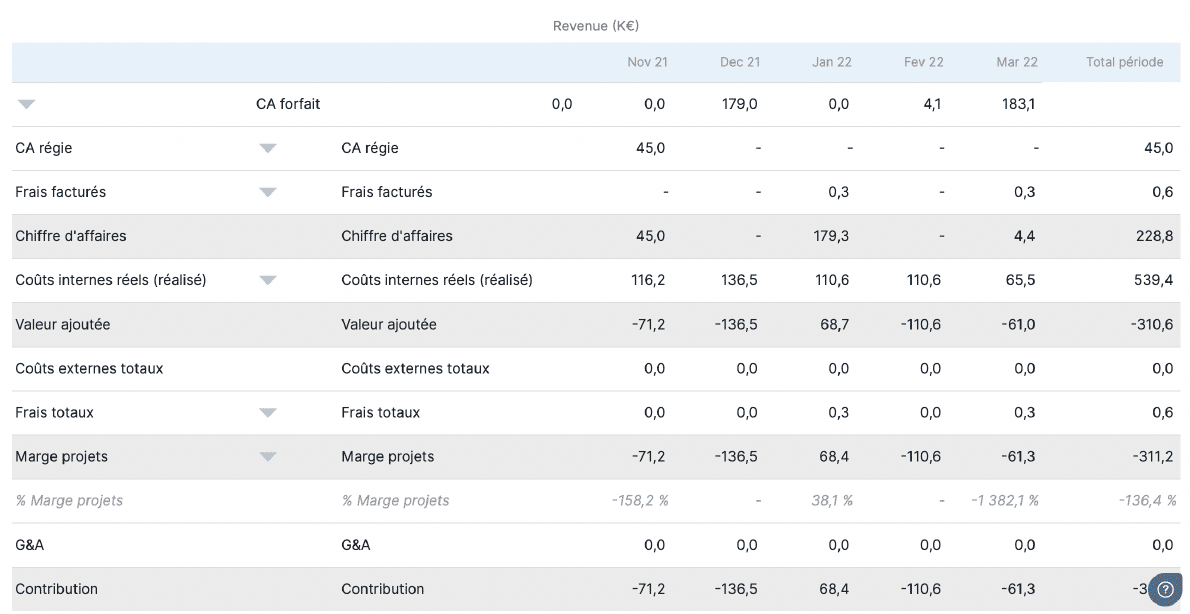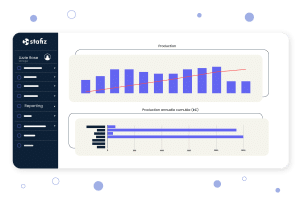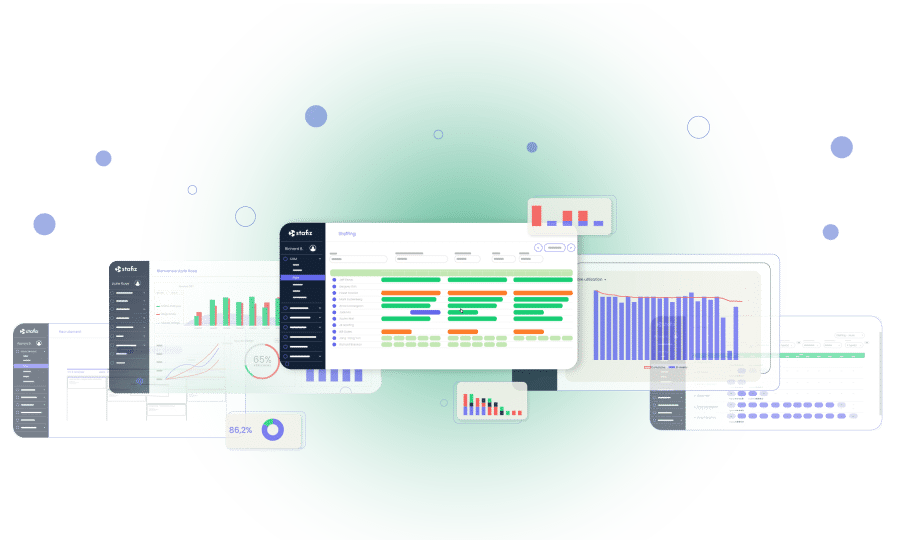What are the challenges of business management?

Step 3: Simulate each situation
The simulation stage completes the anticipation. Setting up scenarios is a way of materializing the consequences of your decisions. Accurate budget monitoring will help you anticipate possible deviations.
You will be able to adjust your business management strategy, and in particular the allocation of resources, both from a human and financial point of view.
Use all the tools at your disposal. Software that includes business intelligence will provide you with relatively consistent and realistic predictions based on your past results. However, keep in mind that these are not absolute truths but predictions.
Step 4: Respond proactively
The anticipations and simulations carried out previously will help to provide you with the necessary foundation to adapt your strategy or your project governance.
Plan your change of direction:
- Identify the elements to be adjusted that will allow you to be as close as possible to your estimates;
- test and iterate;
- Prioritize in order of importance.
Responsiveness and adaptability are essential here.
Which software for business management should you choose?
Reporting and dashboards
Reporting and the creation of well-constructed dashboards are essential for business management and are effective project management tools.
Differentiate between reporting and dashboards
Reporting consists of processing and collecting data. It appears raw, without interpretation, decontextualized.
To be relevant, this data must be structured and shaped in order to be a lever for decision-making. Any information taken out of context could lead to misinterpretation and inconsistent decision-making.
Choosing the right KPIs
The choice of project management KPIs – also known as key performance indicators – is strategic.
The margin rate, the absenteeism rate, the number of sales or the number of recruitments are examples.
This step is crucial and must be considered carefully. Beware of vanity metrics, these flattering indicators do not always reflect the performance and reality of the company.
In addition, be aware that the KPIs to study can vary from one company to another. Indeed, they depend on the stage of development and the objectives to be achieved.
Building effective performance measurement tools
Ideally, building dashboards involves the entire company. Each department should be able to share key data to gain visibility on the ground reality.
Creating project management dashboards can be a tedious project, but the rewards are well worth the investment of time. Relevant relevant dashboards will give you access to clear clear, concise information to help you make decisions in both the short and long term.
In addition, Stafiz is a partner of choice for the implementation of business management. The different views offered allow a synthetic view of all the essential data for the strategic management of a company :of the resource planning, schedules, project cost monitoring, and activity management.
ERP-type management software
While ERP systems are essential allies in the implementation of activity management, they ultimately serve the entire organization. Indeed, all departments and hierarchical levels will benefit from this 360-degree vision providing reliable and real-time aggregated data.
This will also prove to be particularly useful during the anticipation and simulation stages, thus allowing realistic estimates.
For decision-makers, ERP is a strategic tool that provides visibility into the company's activity and its growth potential. Any ERP integration or migration project therefore deserves special attention as it represents an essential tool in business management.
Business Intelligence tools
Business Intelligence integrated into a number of software programs will complement the tools mentioned above. Indeed, the latter will allow a more complete analysis of the data, allowing for more realistic forecasts, contextualized interpretations, and even suggestions for concrete actions.
Business management is based on data. The objective is to ensure the smooth running of activities while setting the direction to be taken. As a result, it is essential to have accurate numbers that you can rely on, structured in a way that saves you time in your decision-making. Thus, high-performance and scalable tools become essential.
The Stafiz management software has completely integrated this need for precision, ease of reading and flexibility. Years of consulting experience have helped identify the management needs of executives, and our product has been designed to meet these requirements.
Our goal is to provide you with all the visibility you need, as easily as possible, to help you make informed decisions and support your growth.
Stafiz's analysis tools allow you to understand the reasons for over-performance or under-performance. Here are some examples:
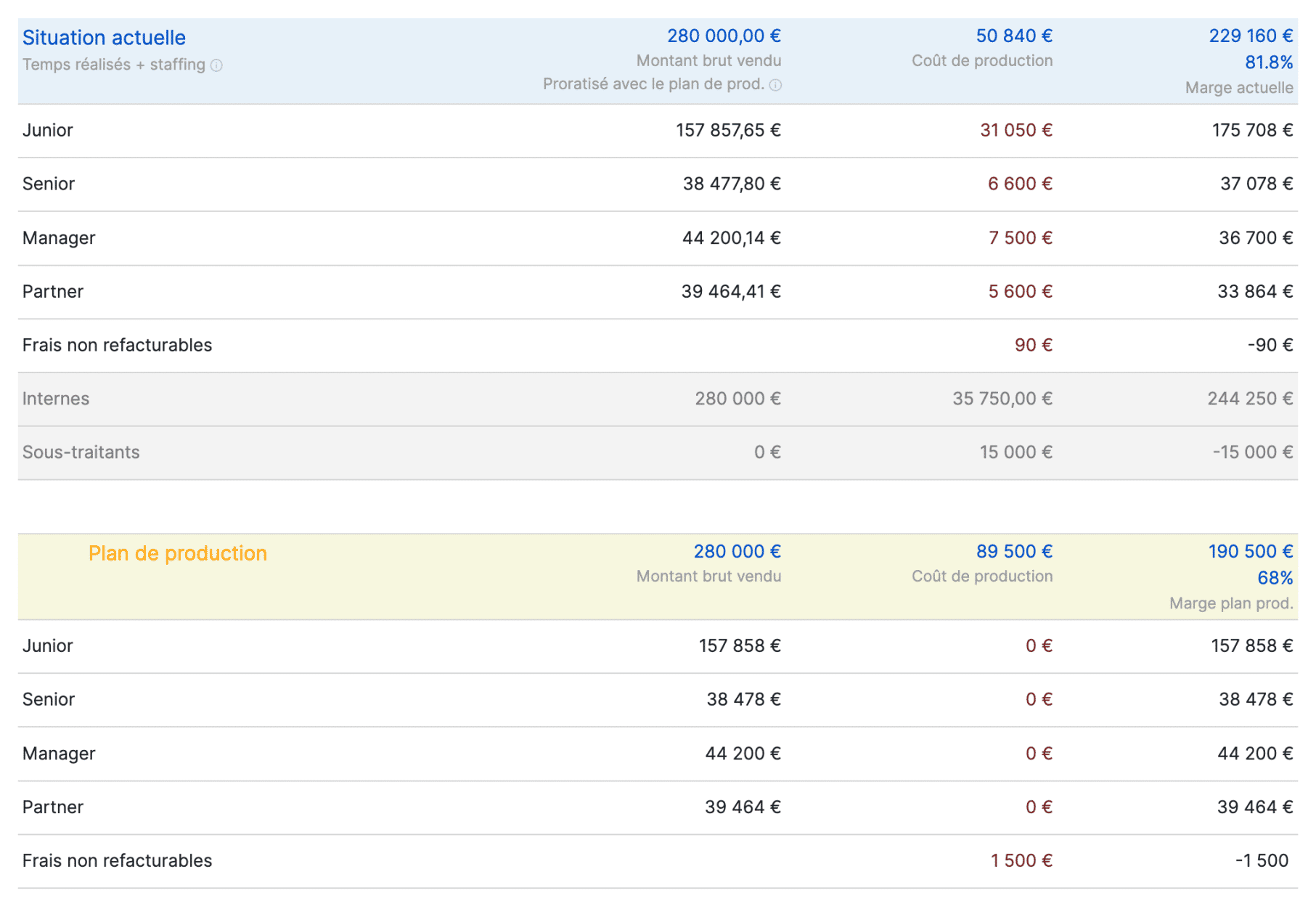
Questions:
Management consists of supervising and coordinating teams to achieve operational objectives on a daily basis.
Management, on the other hand, has a more global and strategic scope: it involves monitoring, analysing and adjusting the company's performance based on data to guide decision-making.
Business management KPIs vary according to the objectives, but among the most common are:
- Turnover and gross margin for financial monitoring.
- occupation rate of teams in service companies.
- Customer Acquisition Cost (CAC) and Customer Lifetime Value (CLV) for sales performance.
- Customer satisfaction rate for quality of service.
- Productivity per employee to measure operational efficiency.
